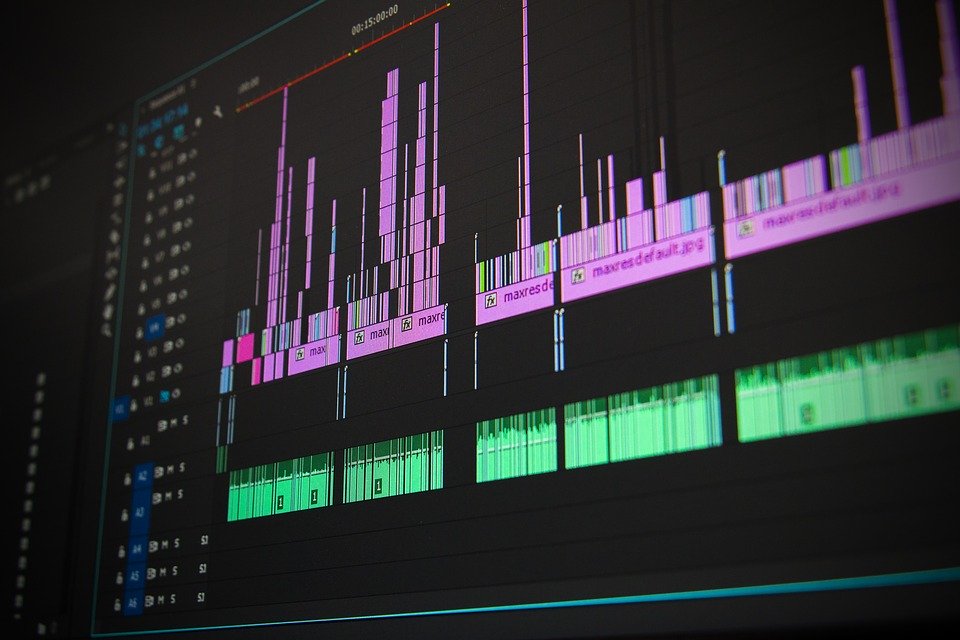
In today’s age of instant content and social media, the role of digital video editing is changing tremendously. And for an art form that was conceived out of the methodical splitting of film stock, it’s with great dissimilarity that editors today are often tasked with editing videos very fast, almost in real-time, and on the go.
Let’s be honest, for most editors who work on industrial, commercial, television, or professional filmmaking projects, the faster you are, the better! There is actually a great correlation between editing speed and earning potential.
While every editor needs that little extra time to make few changes, the reality of this industry means that editors need to always keep looking for ways to make their editing faster through shortcuts and utilizing all other necessary effects and tools at their disposal. In this post, we handpicked five easy ways to speed up your video editing process.
1. Organize
Clearing clutter is conducive to healthy and fast editing. In fact, video editing gurus will tell you that clutter is primarily the leading culprit behind production headaches. For faster editing work, ensure that that your footage and assets are well organized and properly labeled. A simple and standard way such as Footage-Project File-Graphics-Audio-Images can do the trick. You can also organize your work based on the dates and cameras that they were shot on. This may become handy, especially if you are doing any kind of color grading. A proper organization also means having a plan and planning ahead.
2. Buy or Customize LUTs (Video Color Presets)
Let’s say you have a YouTube (News - Alert) channel called ‘Lion Therapy,’ where each week, you treat your viewership to breathtaking sightings of the majestic king of the jungle. And for this project, you always use the same lighting and camera set up. This is where custom or ready-made LUTs become vital. In the case of ‘Lion Therapy,’ you can create or buy professional LUTs so that you don’t have to keep color grading manually over and over again.
If you’re looking for inspirations and professional, high-quality work, Bounce Color is a great place to explore. Their new Complete Bundle of LUTs is a must-have for any editor’s presets library, featuring 13 different packs all in one bundle.
3. Learn Keyboard Shortcuts
You can’t speed your editing game if you don’t know keyboard shortcuts. Most editing software and assets come with numerous standard shortcuts for pretty much anything. If you’re well-versed with Photoshop or after effects, you may find that most shortcuts in video or audio editing are pretty much the same. However, if you are unfamiliar with the shortcuts, you can just do a simple google search, and you’ll find tones of professional help on shortcuts. Learn about them as much as possible.
Some of the best and most common shortcuts in video editing include Ctrl + Shift + D (Apply Audio Transition); Ctrl + D (Apply Video Transition); Shift + T (Trim Edit); Ctrl + K (Add Edit); Ctrl + R (Speed/Duration); G (Audio Gain); and Ctrl + N (New Sequence). Editors who have been in the industry for long know that the keyboard is their prized tool. And there is nothing that shouts saving time more than keyboard shortcuts. In connection to shortcuts, it can be beneficial to purchase an editing keyboard that displays the editing shortcuts on each appropriate key.
4. Edit Performance First, Color and Effects Last
It doesn’t matter what video, or music you are editing, there’s always some sort of performance: tutorials, vlogs, music, whatever. The actual editing process might be different; of course, depending on genres, but you still want to cut the performance part first before doing any other editing works. At this point, forget about everything else and focus on the coherent parts that tell the story, where the performance is happening.
Add effects and color last. Editors often want to make things perfect as they go, fine-tuning every second of every clip, getting the perfect effects and colors on every shot, and adding in little lens flares and motion tracked doohickeys. Editing specialists recommend leaving this part until the last stages of your editing; else, you’ll be slowing yourself down. On the same note, don’t throw off your rhythm by bouncing between tasks.
Separate each task on its own process, cut your main footage, add b-roll, tweak timing, color correct/grade, and add titles/effects. Basically, do it production-line style, where you finish all of one thing first before jumping to the next. Maintaining your rhythm also means cutting off all distractions. Turn that phone off, or at least put it on silent. Close down that social media tab on your second PC and edit your project.
5. Choose Great Peripherals and Accessories
Choose and invest in peripherals and accessories that work for you. Understanding your peripherals and editing accessories will allow you to perform at a maximum level. For instance, as with an editing keyboard, you can also invest in a gaming mouse. A gaming mouse comes with additional features such as faster response time and programmable buttons that can greatly help in your editing work. For instance, you can use programmable buttons to save and reverse actions without needing to use both hands as done in shortcuts.
Similarly, invest in a quality pair of headphones not only for audio work but also for one that is comfortable for non-stop use. The same also goes for a chair. You need maximum comfort when you are editing your projects, especially if you do this professionally and on a regular basis. The trick is spending money where you spend your time. If efficiency is the name of the game, then small implementations such as these can make all the differences for your editing projects.
Image Source (News - Alert):
https://pixabay.com/photos/editing-video-computer-1141505/
